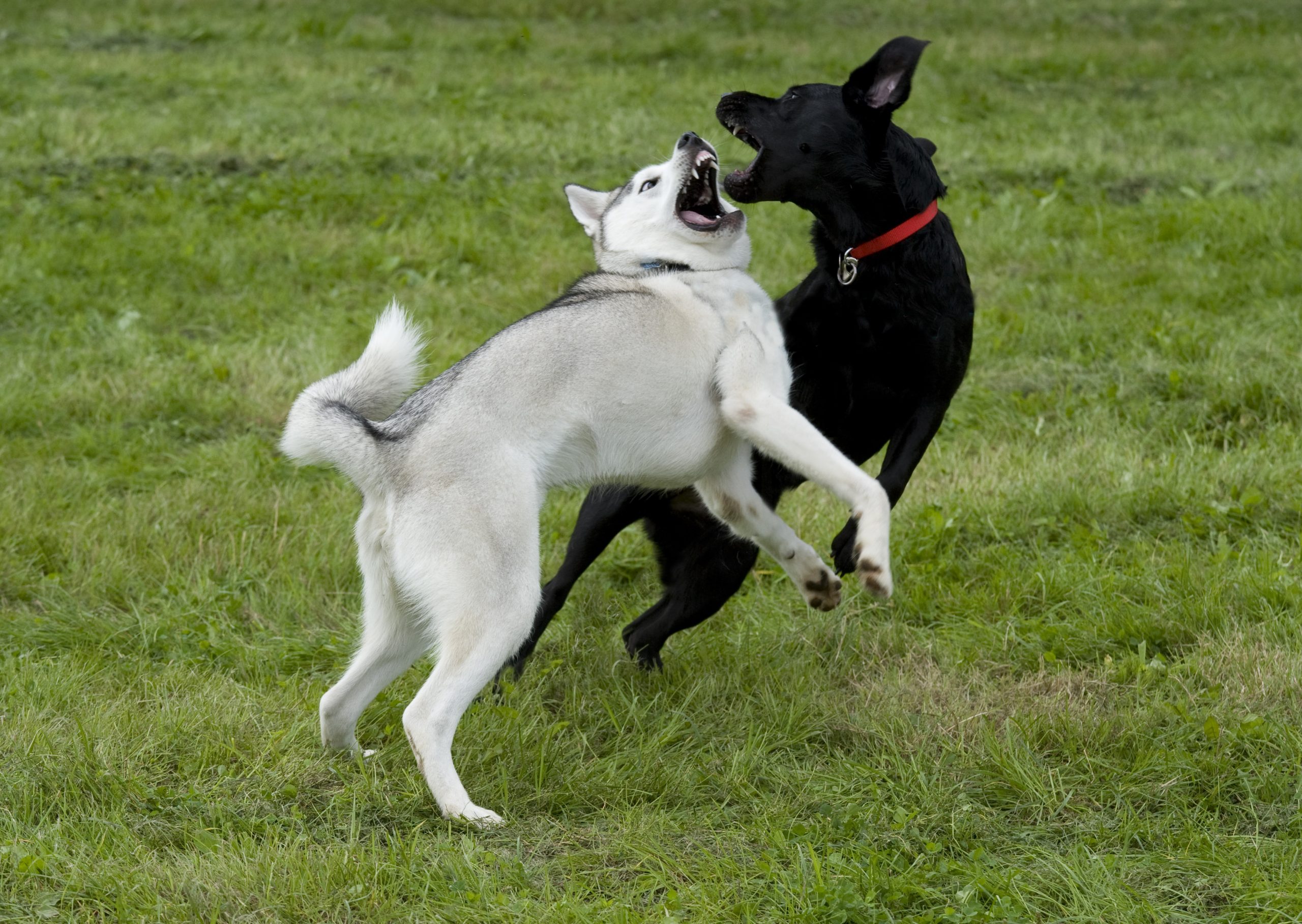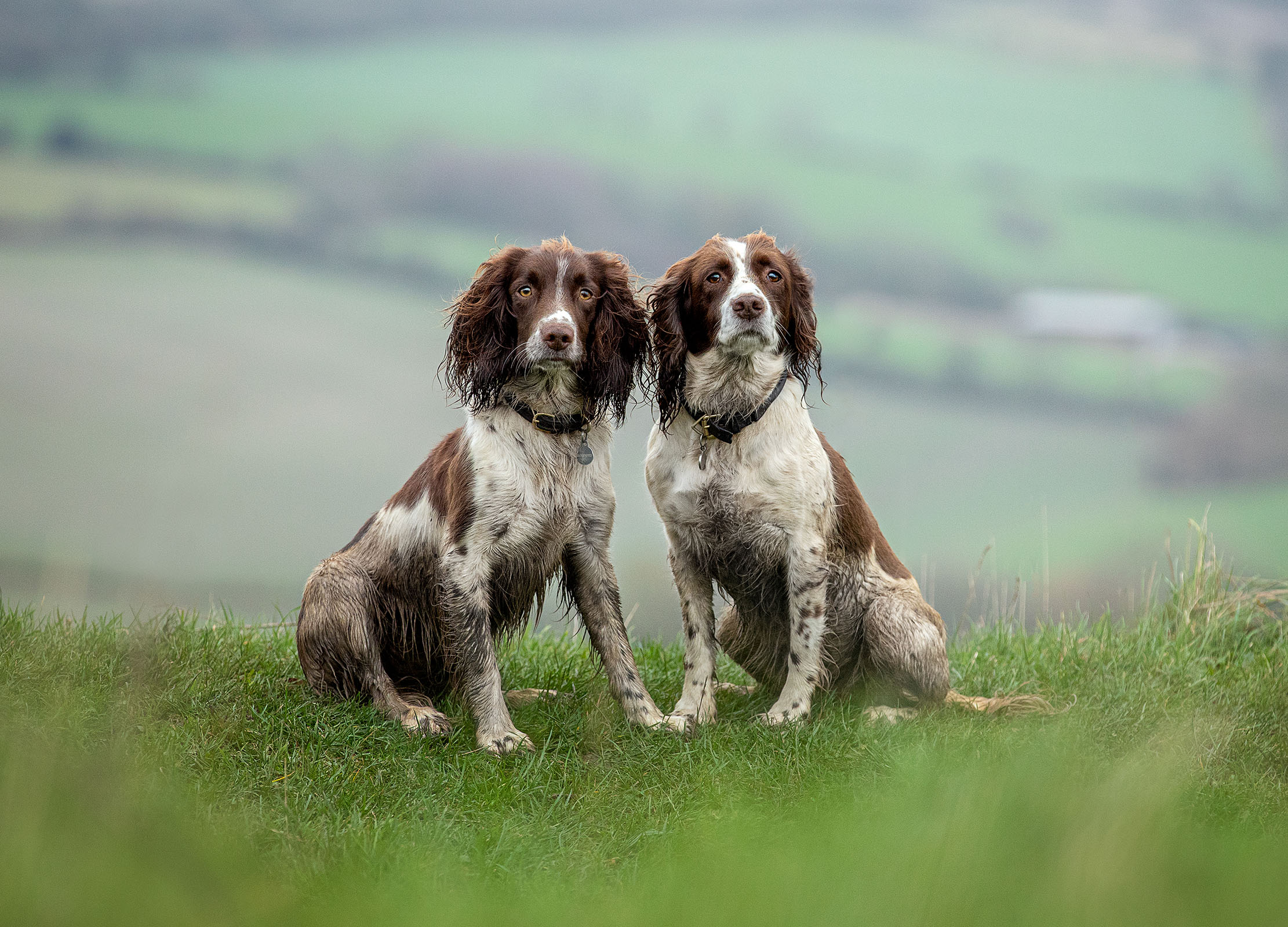What to do if your dogs wind each other up and cause trouble, by expert trainer Ben Randall
Having a pair of dogs can be great fun — but it can also cause problems if they prompt bad behaviour in each other. Ben Randall explains how to handle this situation.


As many owners will attest, having a dog can be addictive. It's common for people to end up with more than one, whether adding new dogs to the family or getting a bonded sibling pair from the start.
While it usually just adds to the fun — dogs are pack animals, after all — it can sometimes mean that you end up with dogs who bring out the worst in each other. That's something that this week's reader is facing; she contacted me via paws-for-thought@futurenet.com to get my advice:
Dear Ben, I’m at my wit's end and have tried everything. I'm finding it impossible with my two dogs as they wind each other up whilst out walking. They are fine passing people, but if a dog, a cat or even a squirrel is seen they go mad. They start off barking at the target, then at each other, then fight with each other. I have even been bitten whilst trying to stop them. I’ve tried treats, commands and holding them back. I’ve even tried muzzles, but then they refuse to walk at all. I really don’t know what to do, they are little sweethearts until this happens. Please help. — K.D., via email
Rest assured, you're not alone. I see this a lot in dogs who come to me for my Beggarbush training, and with dogs that come to our boarding kennels — and in fact I had to deal with the exact same issue this morning. Two sibling German Shepherds arrived, and they were already barking frantically as the car pulled in. We think long and hard before accepting dogs that might upset the other residents at our kennels, but we agreed to give them a day to see if they calmed down.
It wasn't easy. The moment the car boot was opened the dogs barked frantically until they were each put on the lead — and even then they started fighting, and showing aggression to another dog who arrived soon after. I could see straight away I was dealing with two siblings, 8-10 months old, highly wired and untrained, with no mutual respect for each other or their handlers.

The first thing I had to do was get into my training mindset: it’s extremely important. Before I took hold of the two dogs on their leads I made sure I was in a confident, calm state; when I took over, I turned them around and gave them a firm verbal 'leave' command.
It stopped them barking and lunging; and they’ve been here three hours now and are relaxing in their run together, and dozing off.
But while I'm sure they'll be okay during their stay, this is very much a sticking plaster. The owners have a lot of work ahead of them to get these beautiful but hugely powerful dogs properly trained. And it does sound to me like some of the things you've tried have been similar: treats and muzzles might help alleviate symptoms, but they won't deal with the cause. It's a bit like putting a bandage on
Exquisite houses, the beauty of Nature, and how to get the most from your life, straight to your inbox.
With all my training I’m very much a believer in going back to basics. I don’t like to put a plaster on something immediately without it being fixed correctly — if you have a broken leg, will putting a bandage on there make it better? No, even if it’ll look better. It needs treating properly, and time to repair. Here's how to do that.
How to deal with dogs who wind each other up
1. Be brutally honest with yourself
You mention in your question that your dogs are well behaved at home and fine. But while I've no doubt that they're affectionate and manageable, are they really as well-trained as they could be? Are there things that might seem small that you let them get away with here and there? I usually come across some signs that that's the case, because if they’re acting up in this way when they’re out and about, they’re not as well trained as I’d want them in the home environment.
2. Master the training at home — especially the 'leave' command
First things first: I’d like you to really work hard on teaching your dogs the ‘leave’ command. We want them to understand that ‘leave’ tells a dog, 'That’s not yours – it’s mine, and you don’t need to concern yourself with it.'
3. Focus on patience — at mealtimes, around the house, and even going to the toilet
I want your dogs to be calm and patient at feeding time — and so much so that one of them can be sitting patiently while the other one eats.
I’d also like them to sit calmly when you go in and out of doors or rooms in your house, and call them to you individually. Mix it up and take turns over comes first.

I'd imagine from the behaviour you’ve mentioned that when they out into the garden to relieve themselves, they rush out and run around, chasing each other and barking. If that's the case, I’d like you to totally change this routine: get them both to sit at the door while you put a lead on each, then walk them out calmly, and ask them to sit. Finally, release them one at a time to go to the toilet.
Once the first dog has been, call him back and put on a lead, and ask him to sit. Then, and only then, the second dog can be taken off the lead to go. This way they’ll learn patience and calm while the other dog is doing something — and it will also train them to be calmer and more relaxed when outside. Eventually they will be able to toilet together while off the lead, but first we need to establish this good behaviour and set the new foundations.
4. Stop walks for now, and get back in to it slowly
Refrain from walks, for now, in places where you feel you'll run in to your problem — you'll only make it harder to solve. Instead, practice more individual walks with your dogs, and try some brace work walking to heel — getting the pair of them to follow you calmly around the garden is ideal.
When you’re happy with how they do this in the garden, then take them on short walks around your nearby area — individually at first, and then together. Remember that while you're cracking this nut, every walk is a training walk, not just exercise. Keep the walks short at the start — going too far increases the risk of running into a situation which triggers the old behaviour and compounds the problem. As things improve, you'll be able to increase how long you go for.
5. Repetition is key
Keep on at this, at every opportunity and over the next weeks they’ll relax and become much calmer in these situations. If you have your dogs sitting calmly multiple times a day in different situations — for meals, going in and out of doors, learning the leave command and more — then inside a month your dogs will have learned and practised this new calm behaviour literally hundreds of times. I’d hope by the end of the month both your mind and the dogs' minds will be reset — and you can really start to enjoy those lovely longer walks together without worrying about what might happen.
For more detailed advice about Ben Randall’s positive, reward-based and proven BG training methods, one-to-one training sessions, residential training or five-star dog-boarding at his BGHQ in Herefordshire, telephone 01531 670960 or visit www.ledburylodgekennels.co.uk. For a free seven-day trial of the Gundog app, which costs £24.99 a month or £249.99 a year, visit www.gundog.app/trial

